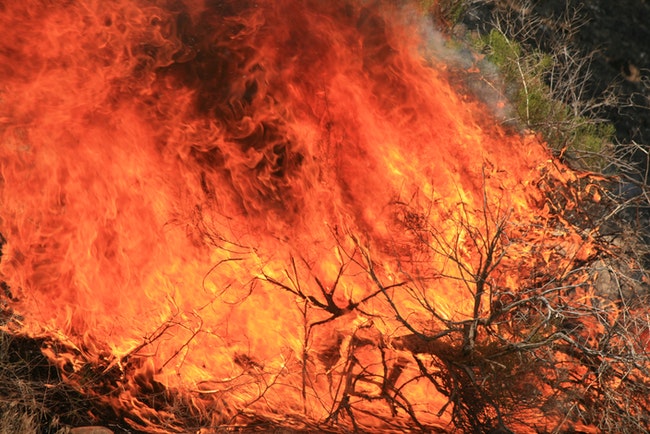The National Interagency Fire Center forecasts higher than normal risk for wildfires in central Oregon beginning in June and in southern Oregon by July, according to a report published Tuesday. Southeast Washington will also be at elevated risk and northern California is considered at severe risk.
The fire center based in Boise, Idaho, is the central coordination site for eight federal agencies involved in wildland firefighting, such as the U.S. Forest Service, U.S. Bureau of Land Management and the National Weather Service.
By August, the fire center forecasts that most of the Northwest will face above normal risk for potential wildfires.
Despite above-average rainfall in April and May in much of the state, persistent drought conditions are largely to blame.
According to the National Oceanic and Atmospheric Administration, the West is in the worst drought in 1,200 years and the driest 22-year period on record. Most of central Oregon is in an “exceptional drought.”
The fire center does not cite climate change in its report, but the Union of Concerned Scientists – a non-profit advocacy group made up of professional scientists – said the region’s drought is a consequence of human-caused climate change.
“As you warm the planet, it’s more likely that you’re going to dry out vegetation and soil,” said Kristina Dahl, principal climate scientist for the Climate & Energy program at the Union of Concerned Scientists. “Even when you saw above-average precipitation in Oregon and other parts of the Pacific Northwest, it really wasn’t enough to kick the region out of long-term drought.”
The fire center forecasts above normal temperatures through the summer into September in southeast Oregon and below normal rainfall throughout the Pacific Northwest from July through September.
Dahl compared the brief bouts of heavy rainfall this spring, coupled with increasingly dry summers, to a savings account receiving small deposits.
“If you’re not putting enough into it over time, it’s gonna get depleted. One deposit of your birthday money isn’t gonna get you back to where you need to be,” she said.
By September, the risk of significant fires will decline in much of the state, according to the fire center report, but fires will still be possible in much of the Cascades and in Western Oregon.
Significant fire potential is forecast across northern California, which could bring smoke into Oregon and other parts of the state.
Since May there have been 30 human-caused fires in Oregon, according to the report, most of which burned less than an acre. However, one central Oregon fire burned 50 acres. This year so far, about two million acres have burned in wildfires, mostly in the Southwest U.S. This is already one million acres above the 10-year average, according to the fire center.
Oregon Capital Chronicle is part of States Newsroom, a network of news bureaus supported by grants and a coalition of donors as a 501c(3) public charity. Oregon Capital Chronicle maintains editorial independence. Contact Editor Les Zaitz for questions: [email protected]. Follow Oregon Capital Chronicle on Facebook and Twitter.




